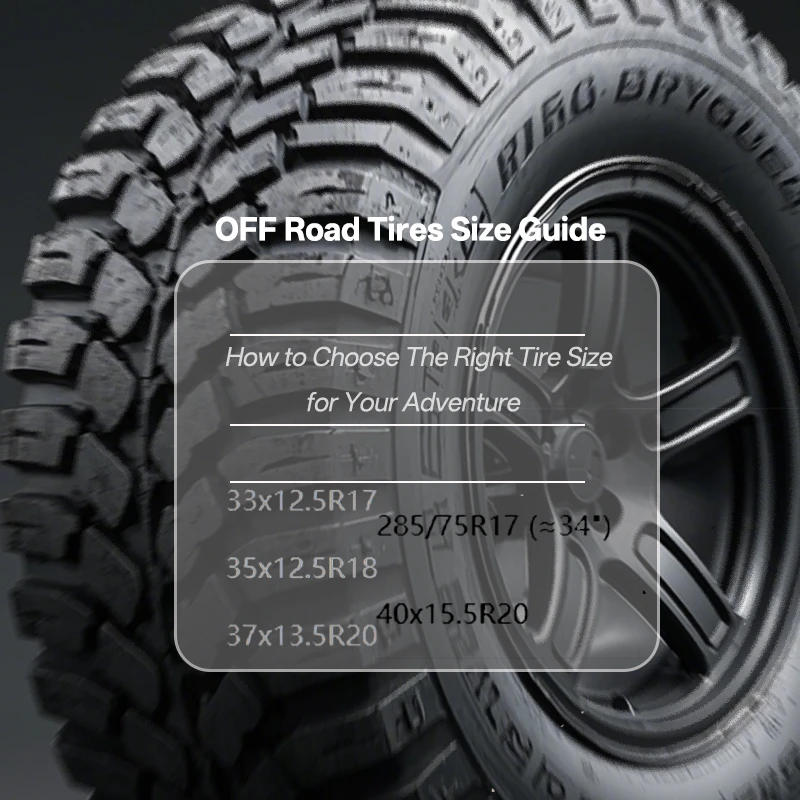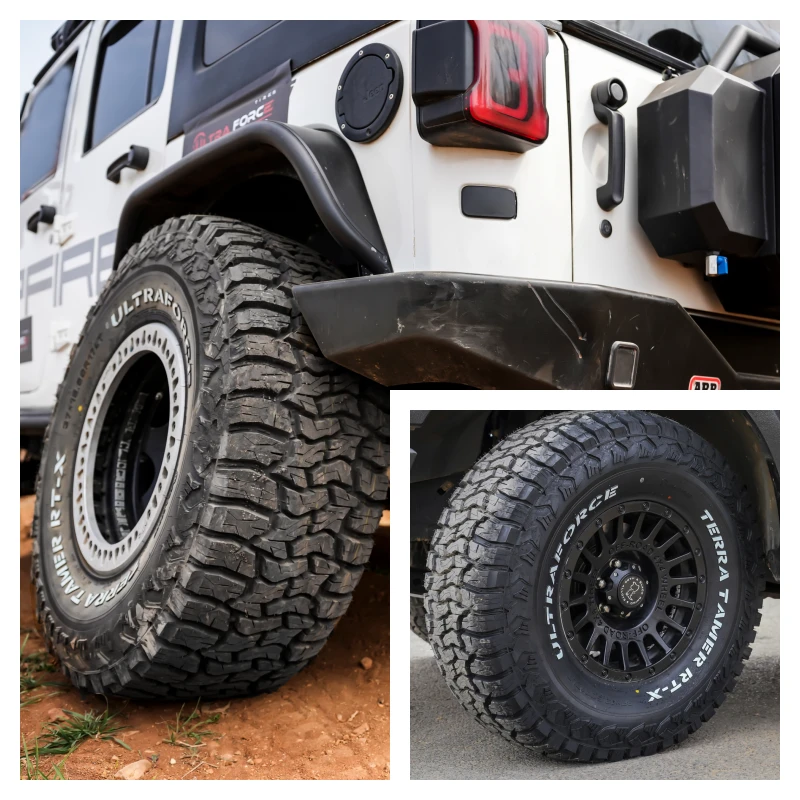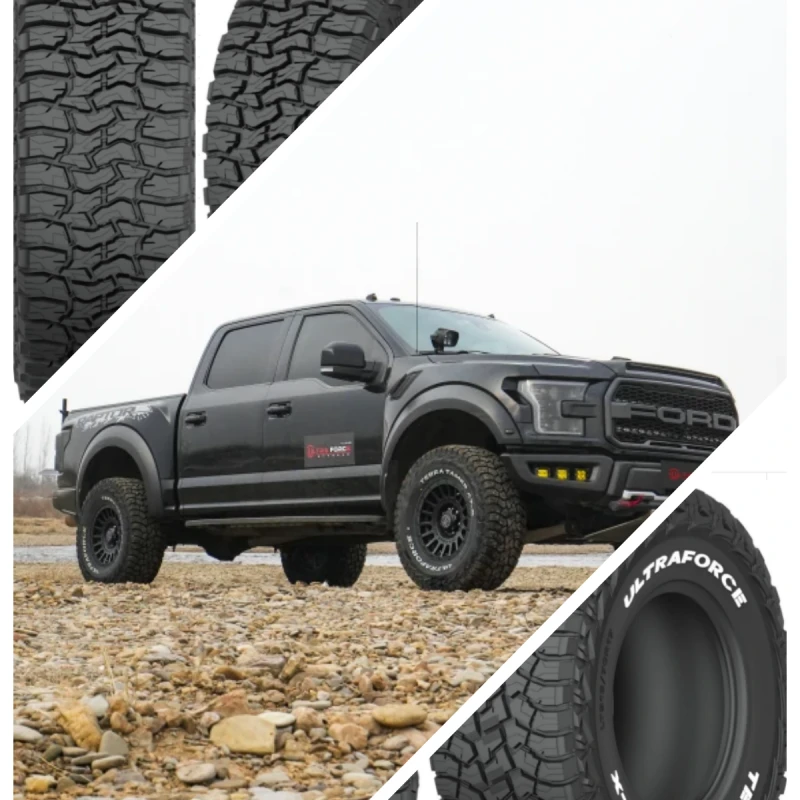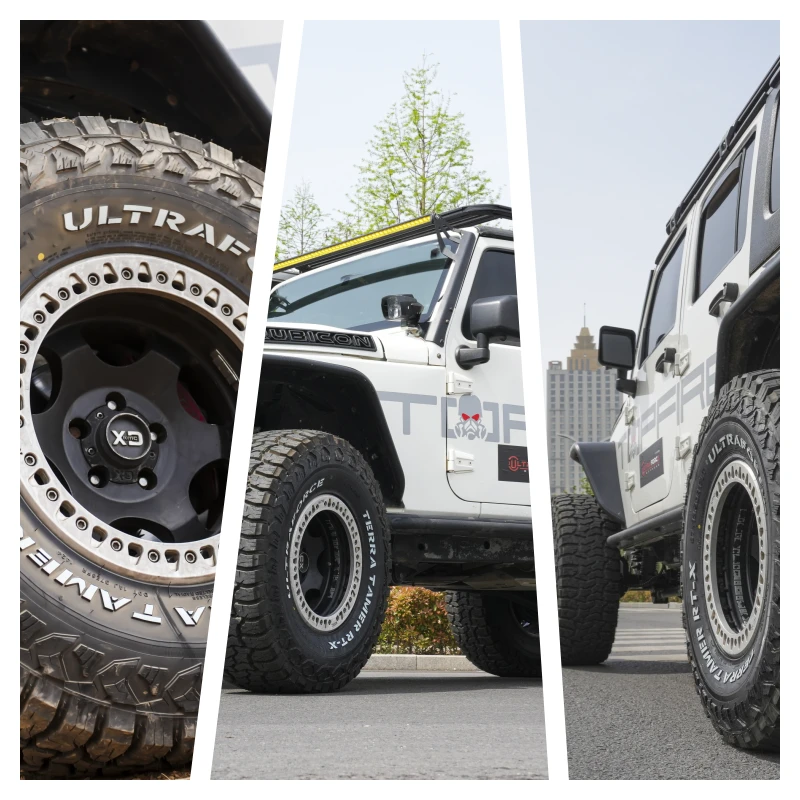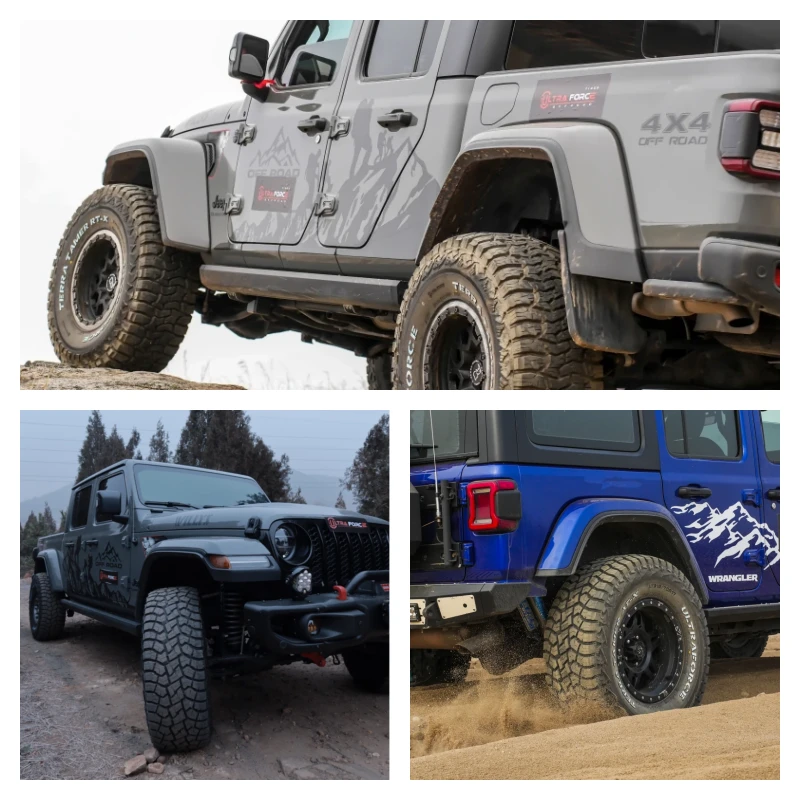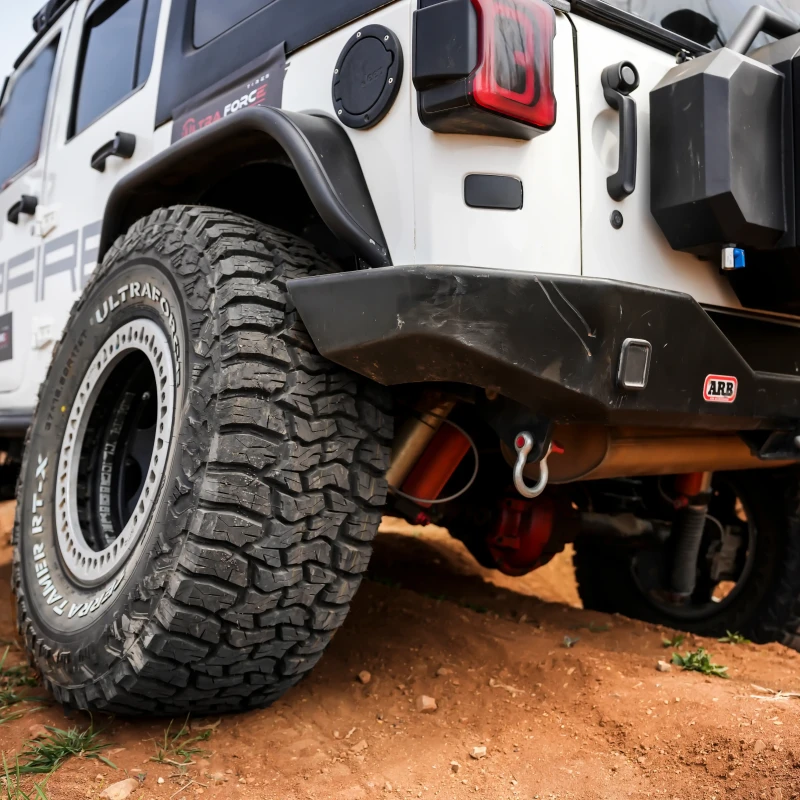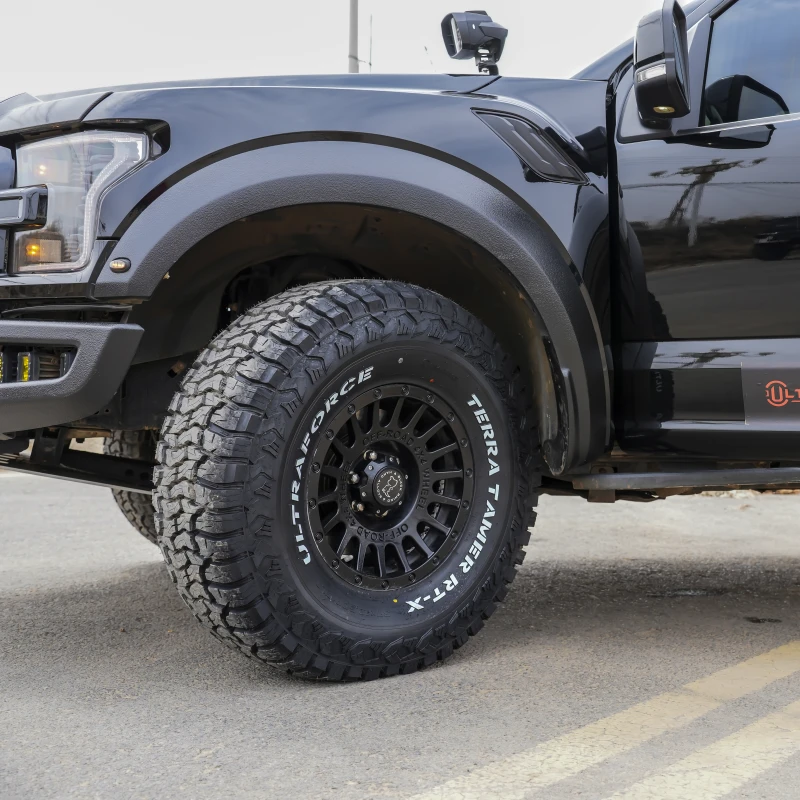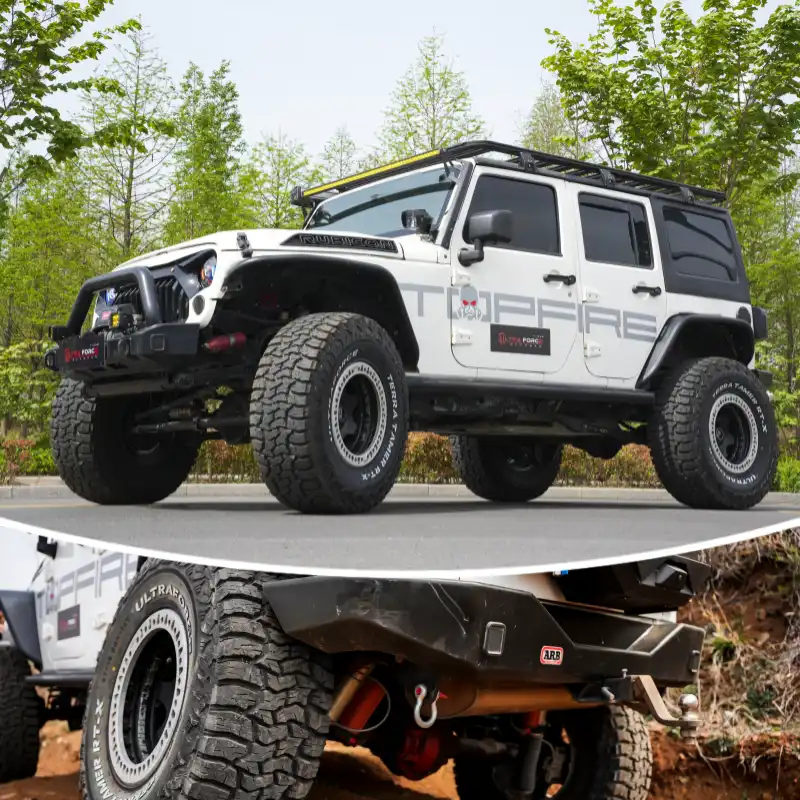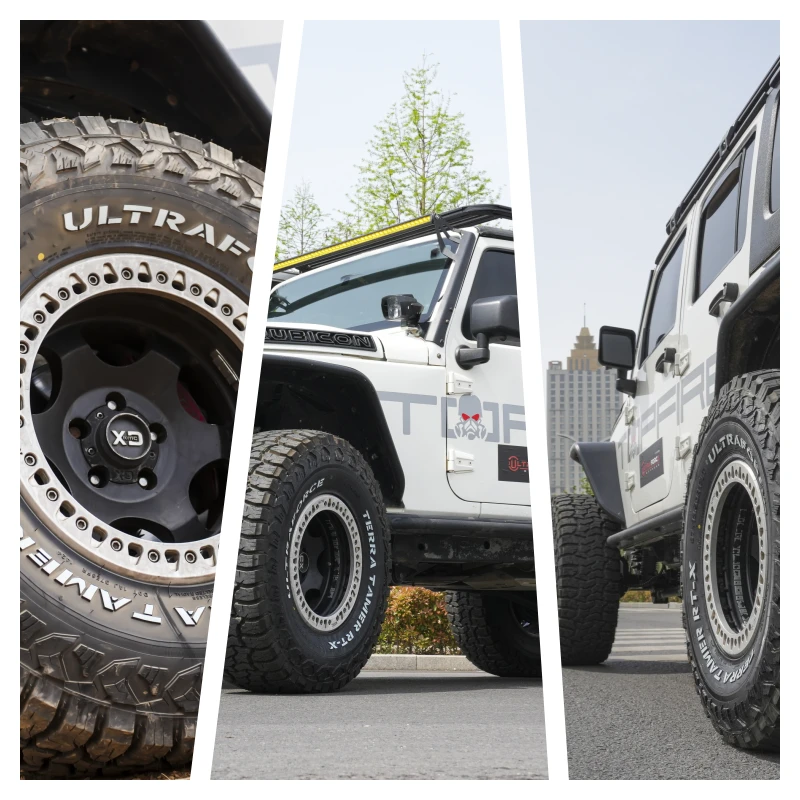The Ultimate Off-Road Tire Size Guide: How to Choose the Right Tires for Your Adventure
When it comes to off-roading, your tires are the only thing standing between you and the wilderness. Choose the wrong size, and you might find yourself stuck in a mud pit or struggling over rocks that should’ve been a breeze. Choose the right ones, and suddenly, your truck feels unstoppable—like it was born to conquer the untamed.
At UltraForce Tires, we’ve spent decades perfecting off-road tire designs for every imaginable terrain. Whether you’re crawling over jagged rocks, plowing through deep mud, or cruising over desert dunes, the right tire size can make or break your adventure. But with so many options out there, how do you know which one is best for your rig?
This guide dives deep into off-road tire sizing, backed by real-world data, expert insights, and a few hard-earned lessons from the trail.
Why Tire Size Matters More Than You Think
Let’s be honest—most of us have, at some point, been guilty of picking tires based on looks alone. A massive, aggressive tread just feels right. But if you’ve ever tried running 35-inch mud terrains on a stock Jeep with no lift, you know the harsh reality: rubbing, poor acceleration, and a fuel economy that makes your wallet weep.
Tire size affects:
Ground clearance – Larger tires lift your differential higher, reducing the risk of getting hung up on obstacles.
Gearing and power delivery – Too big, and your engine struggles; too small, and you lose traction advantages.
Handling and stability – Wider tires improve flotation in sand but may feel sluggish on tight trails.
How to Measure & Identify Tire Sizes
Before we get into sizing recommendations, let’s break down the numbers on your tire sidewall.
Example: LT285/70R17 121Q
LT = Light Truck (tire type)
285 = Section width in millimeters
70 = Aspect ratio (sidewall height as a % of width)
R17 = Rim diameter in inches
121 = Load index (how much weight it can carry)
Q = Speed rating (up to 99 mph)
But what if your tire just says "35x12.5R18"? That’s the inch measurement system, common in off-road tires:
35 = Overall diameter (inches)
12.5 = Width (inches)
R18 = Rim diameter (inches)
Pro Tip: Always check both metric and inch sizes when comparing tires—some brands list them differently!
The Most Popular Off-Road Tire Sizes (And Why They Work)
After analyzing market trends and off-road community preferences, these are the top five most popular off-road tire sizes and their best uses:
| Tire Size | Best For | Vehicle Fitment | Notes |
| 33x12.5R17 | All-around off-roading | Jeeps, Tacomas, Broncos | Great balance of clearance and drivability |
| 35x12.5R18 | Rock crawling, overlanding | Wranglers, Gladiators, F-150s | Needs at least a 2.5" lift |
| 37x13.5R20 | Extreme off-road, show trucks | Heavy-duty trucks, custom builds | Requires regearing & axle upgrades |
| 285/75R17 (≈34") | Daily-driven off-roaders | 4Runners, Land Cruisers | Fits many stock trucks with minor trimming |
| 40x15.5R20 | Competition rigs, mud bogging | Dedicated trail beasts | Full drivetrain upgrades mandatory |
Why These Sizes Dominate:
33-inch tires are the sweet spot for most weekend warriors—enough clearance for moderate trails without major modifications.
35s are the go-to for serious off-roaders who still drive on highways.
37s and up are for those who live for the extreme but accept the trade-offs in cost and maintenance.
Off-Road Tire Size Recommendations by Terrain
Not all off-road conditions are created equal. What works in Moab’s slickrock won’t save you in the sticky Louisiana mud. Below, we’ve compiled the best tire sizes for different terrains, based on real-world testing and feedback from seasoned off-roaders.
1. Mud & Swamp Terrain
If you’ve ever been axle-deep in a mud pit, you know that skinny tires dig straight to the bottom. Wider tires distribute weight better, while deep, self-cleaning treads prevent clogging.
| Recommended Size Range | Why It Works |
| 33-37" x 12.5" | Wide footprint prevents sinking; deep lugs eject mud efficiently |
| 35-40" x 13.5-15.5" (Extreme bogging) | Massive flotation for deep mud, but requires serious axle strength |
UltraForce Pro Tip: Our UltraForce Mud Crusher XT in 35x12.5R17 combines wide shoulder blocks for lateral grip with an open tread design that sheds mud like nothing else.
2. Rock Crawling
Precision matters here. You need a balance of sidewall flex (for gripping uneven surfaces) and toughness (to resist punctures).
| Recommended Size Range | Why It Works |
| 33-37" x 10.5-12.5" | Narrower width helps wedge into cracks; taller sidewalls absorb impacts |
| 40" + (Competition rigs) | Ultimate clearance, but requires heavy drivetrain upgrades |
Personal Experience: I once watched a buddy snap an axle trying to run 40s on a Dana 30—lesson learned. If you’re going big, reinforce everything.
3. Sand & Dunes
Sand demands flotation. Wider is better, and lower pressure is key.
| Recommended Size Range | Why It Works |
| 33-35" x 12.5-14.5" | Spreads weight to stay on top of soft sand |
| 37"+ (For heavy rigs) | More surface area prevents sinking |
UltraForce Sand Storm Series features paddle-like treads that scoop sand for forward propulsion—perfect for dune bashing.
The Hidden Costs of Going Too Big
Sure, 40-inch tires look insane on Instagram. But unless you’ve got deep pockets and a penchant for breaking parts, there’s a limit to how big you should go.
Common Pitfalls of Oversized Tires
Gear Ratio Issues – Larger tires effectively "raise" your gearing, making acceleration sluggish unless you regear.
MPG Drop – Expect a 15-30% fuel economy hit with big tires.
Stress on Components – Ball joints, CV axles, and steering systems wear out faster.
Data Insight:
| Tire Size | Avg. MPG Loss | Recommended Gear Ratio |
| 33" | 1-2 MPG | 3.73-4.10 |
| 35" | 3-5 MPG | 4.10-4.56 |
| 37"+ | 5-8 MPG | 4.56-5.13+ |
Customization: Because One Size Doesn’t Fit All
At UltraForce Tires, we get it—sometimes, you need a tire built for your rig, your terrain, and your driving style. That’s why we offer custom tread designs, sidewall reinforcements, and even branded sidewall engraving for those who want their tires to stand out.
Case Study: A client running an overlanding rig in the Himalayas needed a hybrid tread—aggressive enough for sharp rocks but smooth enough for long highway stretches. We developed a 37x12.5R18 with a variable-pitch tread that’s silent on pavement but bites hard off-road.
Final Thoughts: Finding Your Perfect Fit
Choosing the right off-road tire size isn’t just about looks—it’s about matching your driving needs with real-world performance. Whether you’re a weekend warrior or a hardcore crawler, the right tire transforms your rig from capable to unstoppable.
At UltraForce Tires, we’re not just selling tires; we’re engineering confidence for every adventure. Because when the trail gets rough, you shouldn’t have to worry about whether your tires can keep up.
So, what’s your ideal off-road tire size? Drop your setup in the comments—we’d love to hear what works (or doesn’t) for you!
